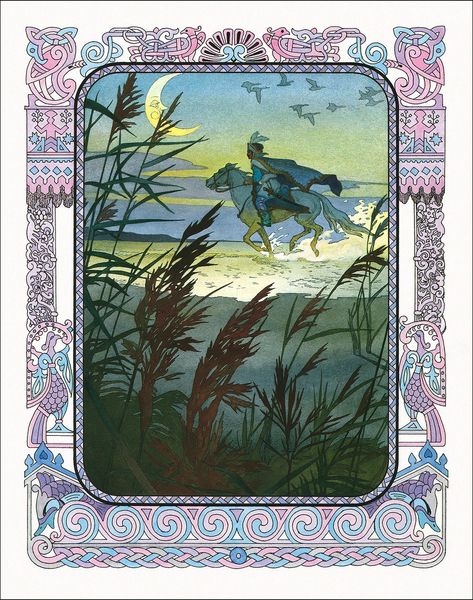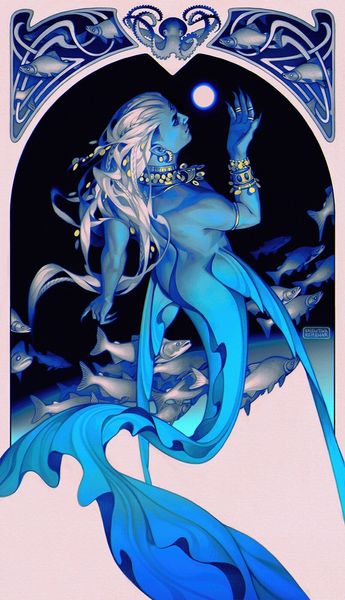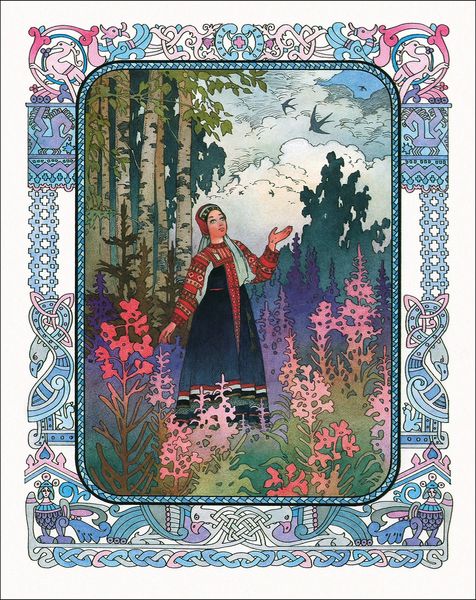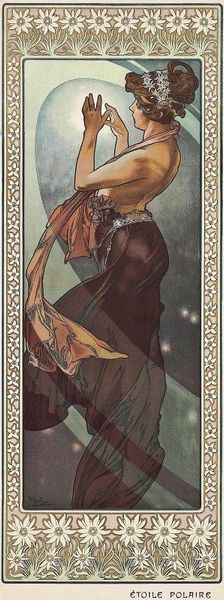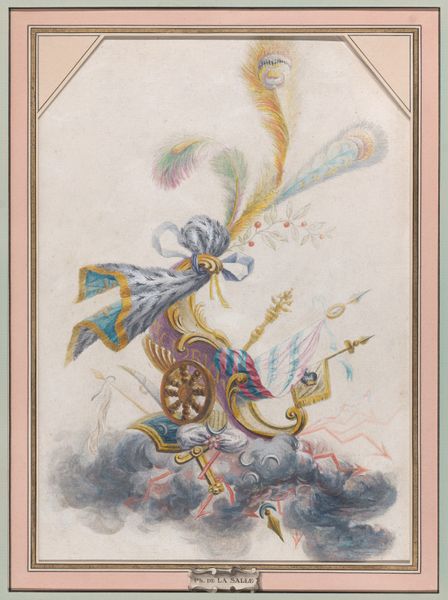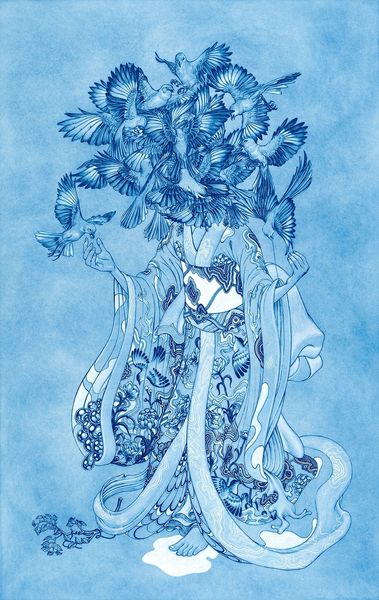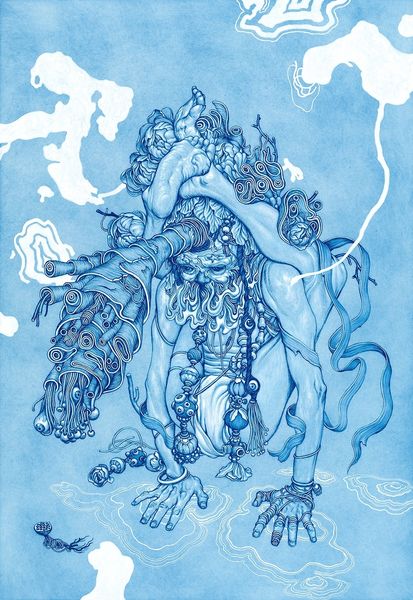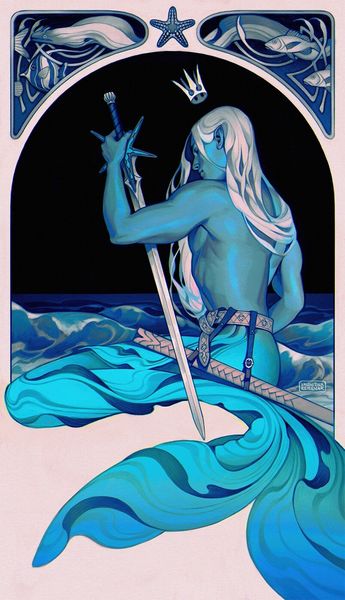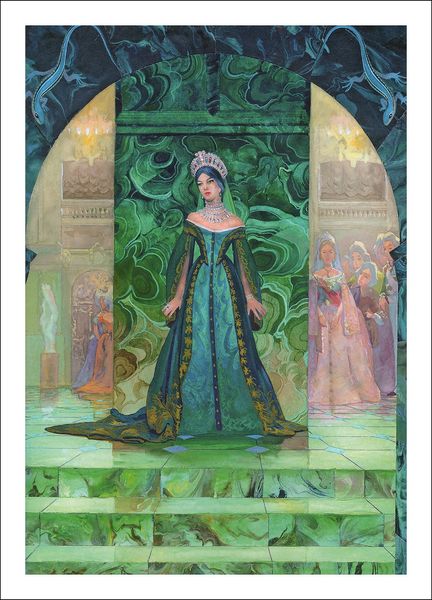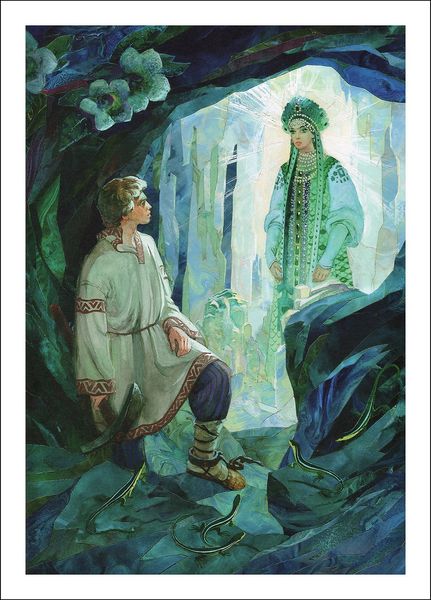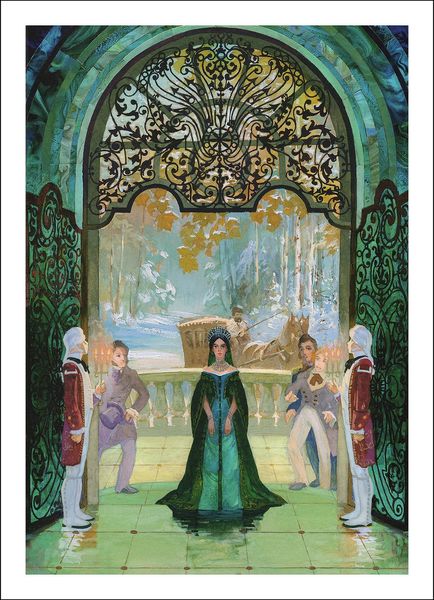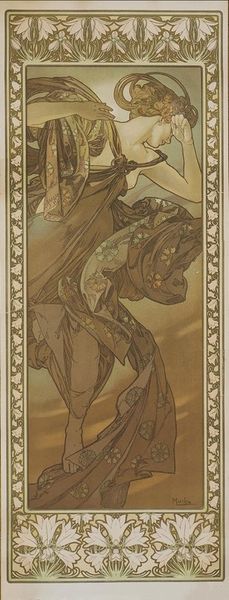
Copyright: Vyacheslav Nazaruk,Fair Use
Curator: Let's discuss Vyacheslav Nazaruk's illustration for "The Tale of the Dead Princess and the Seven Knights," created in 1996, using ink and paper. Editor: My immediate response is one of airy fantasy; the muted color palette, and the layering of figures over landscape makes me think of a Romantic sensibility, something ethereal. Curator: It absolutely evokes Romanticism. This illustration breathes with the tradition of fairy tales, yes, but Nazaruk pulls on deeper threads within Russian history and folklore to discuss themes of beauty, envy, and power structures within a patriarchal society. Look at the figure in the forest. Editor: Right. It appears she's both protecting the knight and creating a barrier. And all of this is depicted using the techniques of ink and drawing. I wonder what significance we might find if we understood the type of paper and ink used in that historical moment. Where did these materials come from? Were there political restrictions to consider in making this work? Curator: The production context absolutely plays a part. The medium lends a softness, yet there’s an inherent structure that we might understand when looking at other works from the same era. We might reflect on Russian children’s book illustration. The decorative borders around the central image, in particular, call for additional cultural research, since they draw upon well-established formal conventions to frame the story. Editor: The border patterns remind me of craft production from the region; repetitive forms and design offer something to consider around labor and value. We see these images and may only recognize them as ornamentation, when really we should examine their means of production as deeply interwoven in the value. Curator: Precisely, that emphasis on materials reminds us that every image comes from labor and extraction. That border, while lovely, suggests a more expansive history of artistic practice—linking “high” art to practices often marginalized as mere "craft." Editor: Indeed. This work brings together figuration, landscape, and Romantic style through its use of accessible materials to address cultural identity in post-Soviet Russia. We can analyze its themes by thinking about what went into the material production. Curator: It encourages an interrogation of both historical narratives and our present assumptions about material value and cultural hierarchies.
Comments
No comments
Be the first to comment and join the conversation on the ultimate creative platform.
